The 5 Best Peloton Toe Cages So You Can Ride Without Spin Shoes
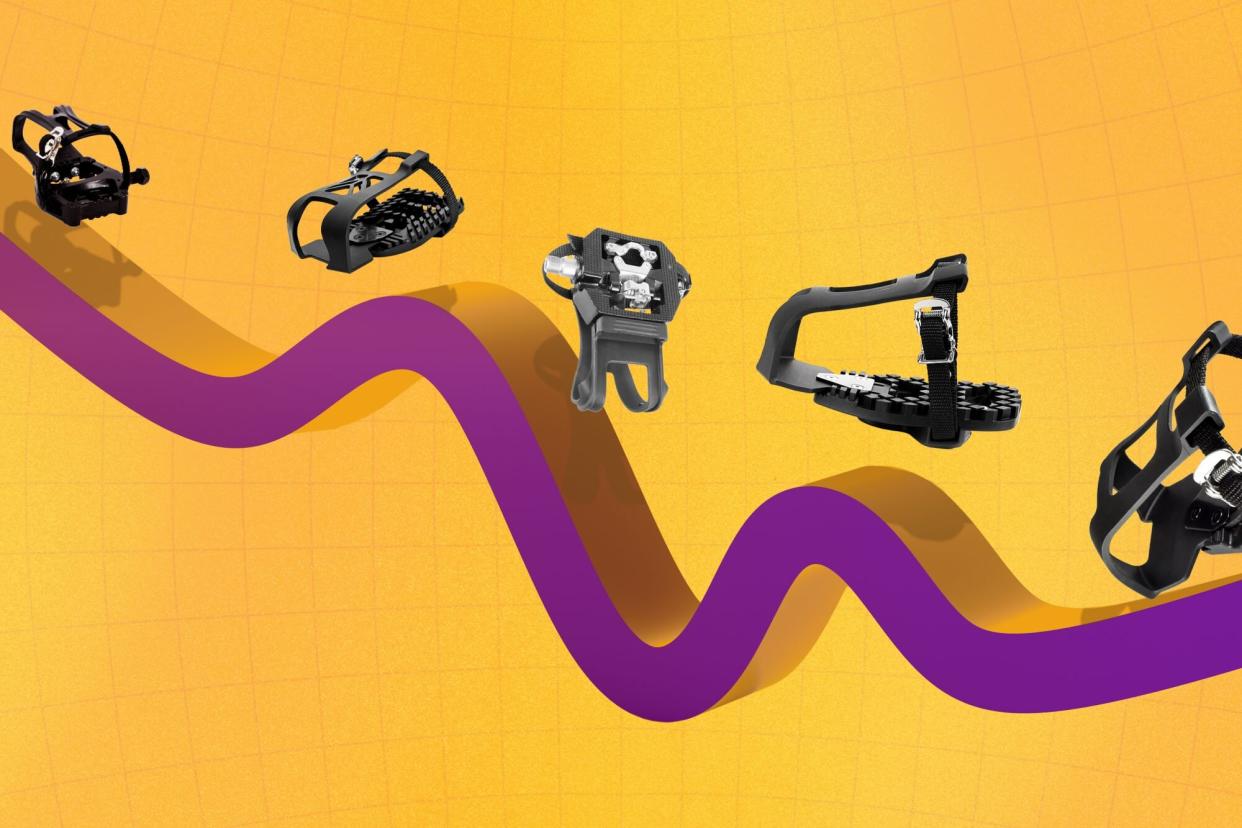
Courtesy of Merchants / Design by Jo Imperio
You did your homework, you compared all the indoor workout bikes on the market, and you decided Peloton is the right brand for you. Now that you're ready to get familiar with all the amazing content Peloton's team of kickass instructors have to offer, you may be trying to decide which accessories are necessary to supplement your cycling experience. Namely, do you really need the Peloton cycling shoes or can you use regular workout shoes to clip in for your first official Cody Rigsby (or Jess King or Kendall Toole or Robin Arzon) experience?
Both the original Peloton Bike and the newer Bike+ include delta-compatible aluminum bike pedals. Some other types of workout bikes include pedals that are compatible with SPD cleats, which feature small silver clips that rest in the sole and snap into the pedals. But Peloton's pedals can only be used with delta-compatible cleats, which feature big triangles that stick out of the sole to clip into the pedals.
Peloton sells their own delta-compatible cycling shoes, but you can also buy your own cleats and affix them to the bottom of any bike shoes with a 3-screw hole setup. Of course, you can always hack your Peloton to install any pedals you want, but the brand is clear that they encourage members to "use the pedals your Bike comes with for an optimal ride."
Nonetheless, cycling shoes just aren't for everyone — but that doesn't mean you'll have to give up your beloved Spice Girls-themed rides. If you don't want to shell out money cash for cycling shoes (Peloton's cycling shoes which include the appropriate cleats cost $125 per pair and the brand sells standalone cleats for $25 per set) or you'd just prefer to ride in the sneakers of your choosing, you can do that.
However, for a smooth, safe ride, and the best experience on the bike, you won't want to just press down on the delta-compatible bike pedals in your sneakers — it won't be comfortable, and your foot should easily slip off the tiny pedal. Instead, you'll need to attach toe cages to your pedals so you can slip your shoes inside, well, the cage, while you ride.
What Are Peloton Toe Cages?
Also known as toe clips, toe cages are small frames that can attach to the front of bike pedals on a Peloton or any bike since they're used and compatible with all kinds of bikes — both stationary indoor bikes and outdoor bikes. Once in place, you can comfortably slide your sneakers inside so the cages surround your feet from the ball of your foot forward up to your toes, which gives you more leverage when you pedal. Most toe cages come with buckles and straps so you can create a snug and secure grip on your shoes, which will allow you to push down and pull up on the pedals safely and efficiently during your ride.
Why You May Want to Use Peloton Toe Cages
The main benefits of using toe cages are that they keep you safe if you choose to ride in sneakers versus cycling shoes. Without toe cages, your foot isn't securely on the pedal and could slip off or cause some other exercise-related injury if you're, say, sprinting in the saddle.
Plus, using the toe cages will allow you to go from sitting in the saddle to riding in a standing position and from sprinting to climbing hills smoothly. Toe cages allow you to mimic the control, and therefore power, in your pedal stroke that you experience when you're clipped in without being physically attached to the pedal.
The other benefit is that the customizable straps can accommodate just about any shoe or foot size, so if you have particularly wide or narrow feet, you can find a comfortable but secure fit. (Related: I'm Convinced These Are the Best Cycling Shoes for Wide Feet)
The Best Peloton Toe Cages for a Secure Ride
Now that you know the basics of why toe cages can come in handy, it's time to buy the best pair that works for you and your bike. Here are some of the best Peloton toe cages Amazon shoppers swear by.
Venzo Peloton Compatible Toe Cages
These highly rated toe cages are specially designed for delta-style pedals — they'll easily work with the pedeals that come on your Peloton Bike or Bike+.
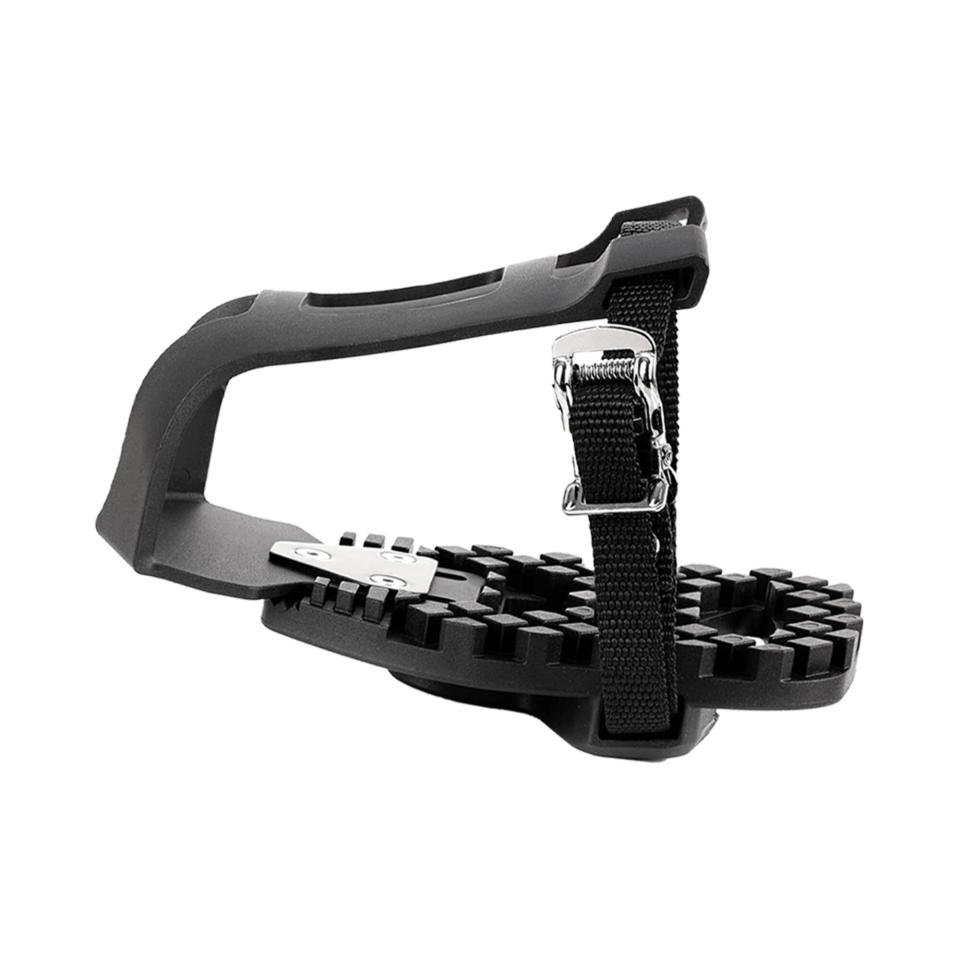
YBEKI SPD Pedals - Hybrid Pedal with Toe Clip and Straps
If you already have a pair of SPD shoes and you're not super stoked to swap them for something that's delta-compatible, you can install these multipurpose toe cages. You cna clip in on one side with your SPD-cleats sans toe cage, or flip the pedal around and you'll have a flat sneaker-friendly pedal with toe cage on the other.
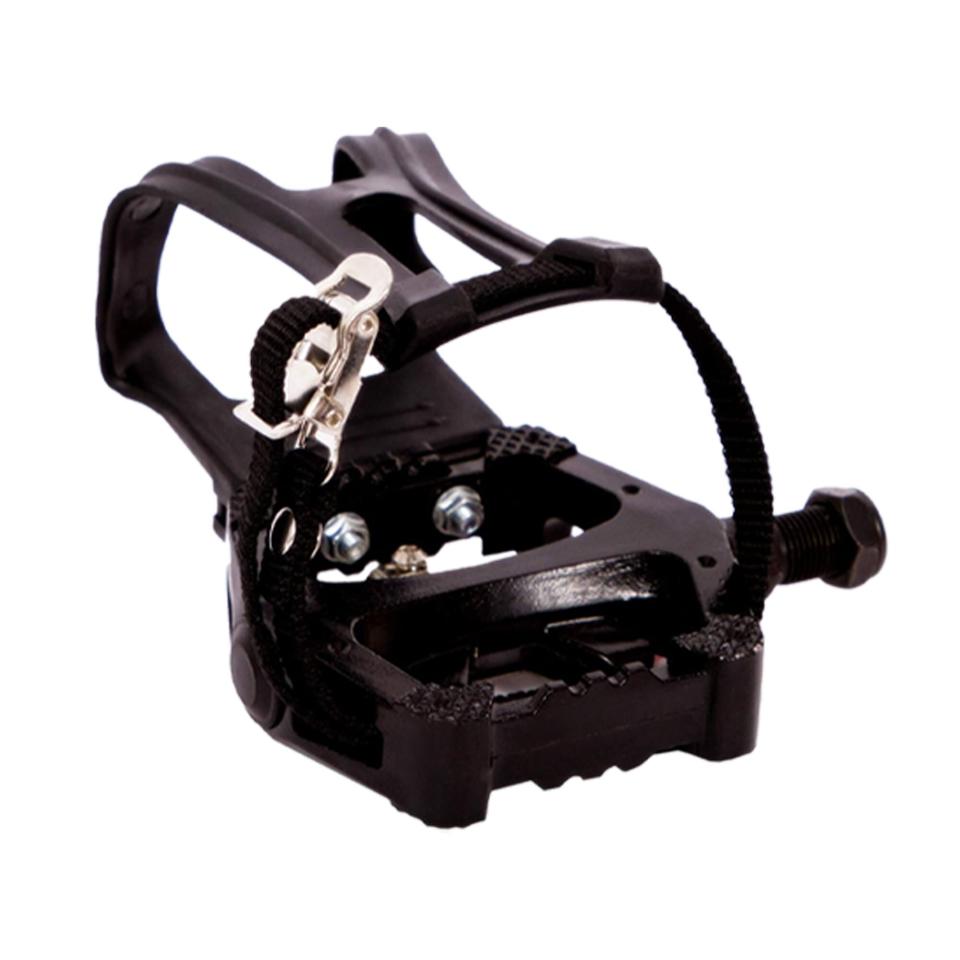
Boerte Indoor Bike Pedal Adapters
These Peloton toe cages are made to last with heavy-duty polypropylene webbing straps to keep your feet in place while you pedal.
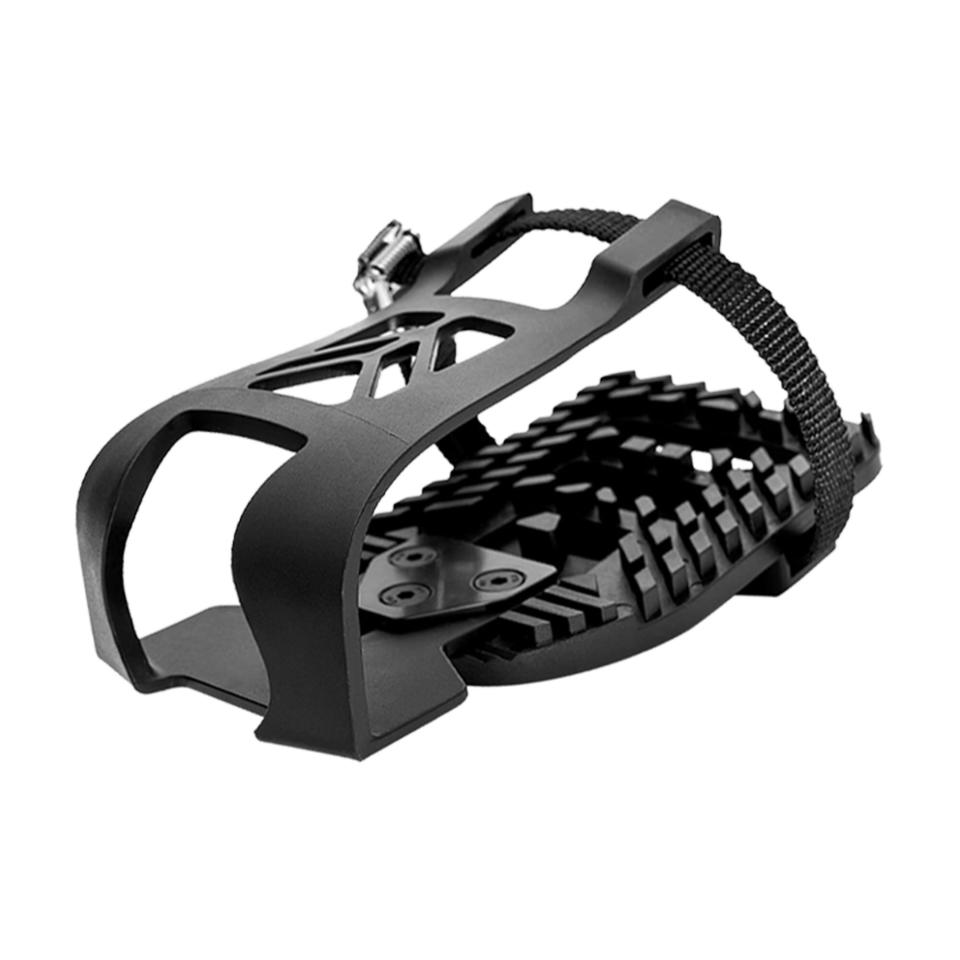
BV Bike Shimano SPD Compatible 9/16'' Pedals with Toe Clips
These toe cages are another great option for anyone who just isn't a fan of the delta spin shoes, which are compatible with Peloton. These come with a pair of SPD cleats so you can clip in with SPD shoes if you have them, or switch them out for toe cages so you can use your athletic shoes.
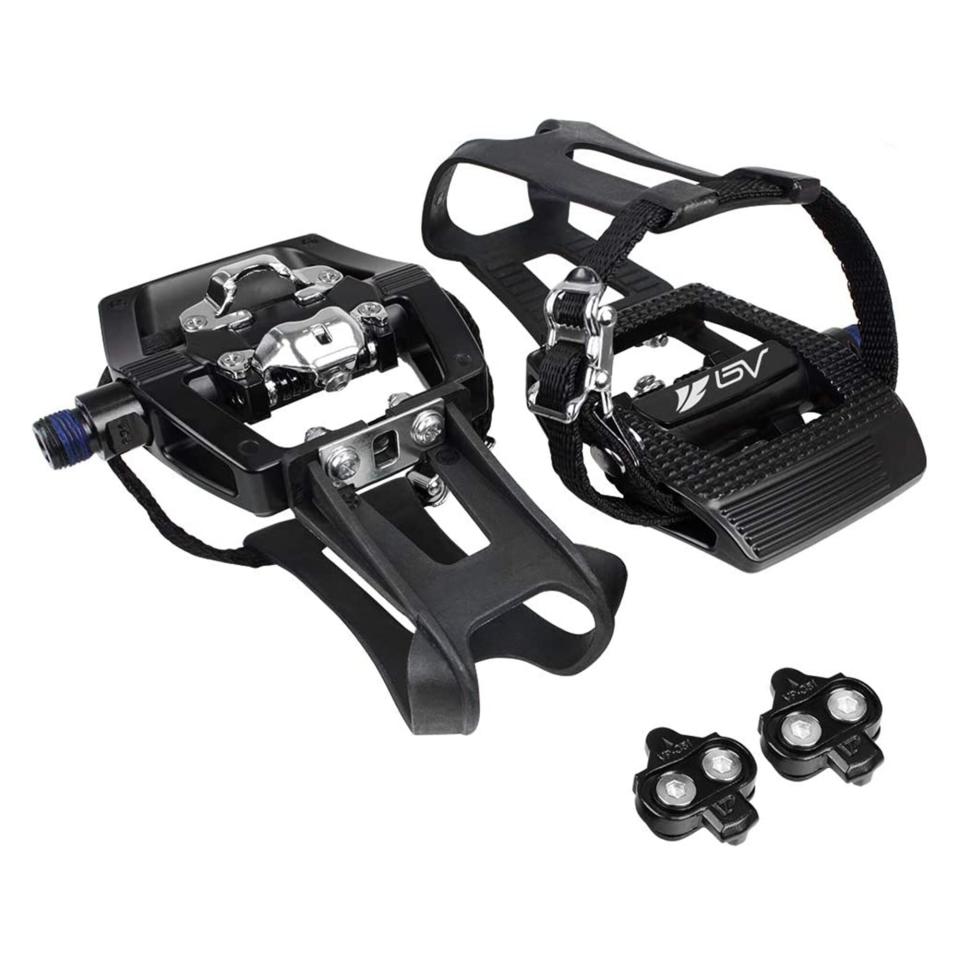
MARQUE Peloton Compatible Toe Cages
The fully adjustable cage is designed to fit a variety of shoe sizes and the reinforced heavy duty plastic is made to endure the toughest pushes and climbs.
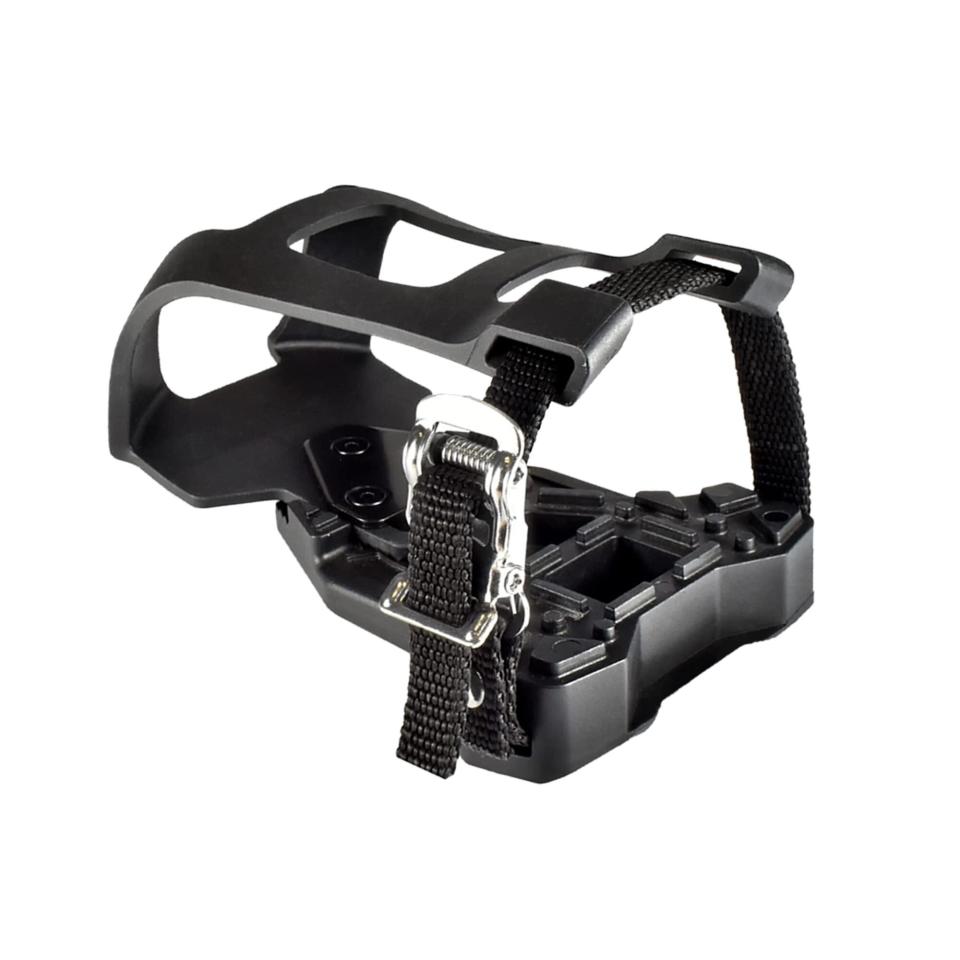
How to Install Peloton Toe Cages
Once you choose the Peloton toe cages that are right for you based on the features and style you prefer, installing them on your Peloton bike shouldn't be too difficult. Here's a step-by-step guide to help for most brands, although be sure to check your specific product's instructions.
Attach the straps to the toe cage and thread the strap through one side of the bottom of the toe cage (make sure the buckle is facing down).
Fold the strap over and thread it through the top of the clip. Pull it all the way through so the buckle sits near the bottom of the clip.
Squeeze the buckle and thread the free end of the strap under the roller and through the tooth opening.
Repeat the process with the second clip and strap but start on the opposite side (just make sure the buckles are facing outward on both cages).
Now slip your workout shoes into the cages. Make sure the buckle on your left foot is positioned on the left side and the buckle on your right foot is situated on the right side (meaning the buckles are facing outward).
Pull up on the straps to tighten them — you want to have a snug fit to your shoes stay put, but be careful not to over-tighten and squeeze your toes.
Once your shoes are securely in place, clip into your Peloton the same way you would with cycling shoes. This part can be a little tricky for some people (as instructor Jess Sims often says, it's the toughest part of the class). Fit the cleat into the pedal and push down with your heel.
Once you're locked into place, you can pull up on the strap again to tighten it and thread the strap through the other side of the buckle so you're secure.
When you're ready to clip out, just hold down the resistance knob on your Peloton and kick your heel away from the bike.
If you're stuck and can't figure out how to unclip, don't panic: you can also just unthread the strap, press down on the buckle to loosen it, and then slip your foot out of the toe clip, leaving the clip attached to the pedal (you can either unclip it later or just leave it there to make getting situated on your next ride quicker and easier).
One Thing to Note About Your Peloton Warranty
If you do swap out your Peloton pedals for toe cages, there is one important detail you should be aware of: The company won't cover any damage to the pedals you put on the bike yourself. When you purchase a Bike or Bike+, a standard 12-month warranty covers the original pedals that come with the Peloton Bike and Bike+ against any defects, but not against normal wear and tear. (FYI, the bike frame itself has a 5-year warranty.)
The company is clear that they do not cover defects or damage to any "non-Peloton products or labor, units that are, or that Peloton reasonably believes to be, stolen, counterfeit, or purchased from an unauthorized distributor or reseller, units purchased or used outside the U.S. or Canada, and units missing serial numbers." That means buyer beware: if you hack your bike, any parts you put on it are solely your responsibility, so check with the seller of your pedals to see if they offer a warranty before purchasing.

